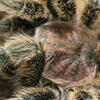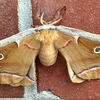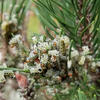There is a definite "otherness" to insects and spiders. When looking at a tarantula, it’s huge and hairy and hard to tell where the face is. They can seem very alien to people and for some that triggers a fear response. With cockroaches, people equate them to dirtiness and trash and decay, but that’s their job — to get rid of decaying material. Insects are essential to our ecosystems. Without them, most ecosystems simply collapse.
A Curious Collection of Creepy Crawlers
Some people are dog people. Others are cat people. Still others have a marvelous menagerie of furry, feathery and scaly friends. Sarah Naughton, a Certified Investigator Trainer at Temple University Harrisburg, took a decidedly different path. Her passion is arachnids and insects. Her first eight-legged pet? A rose-haired tarantula (Grammostola porteri) named Doris, who is still with her today, along with more than 80 other friends! Read about Sarah and her collection here.




